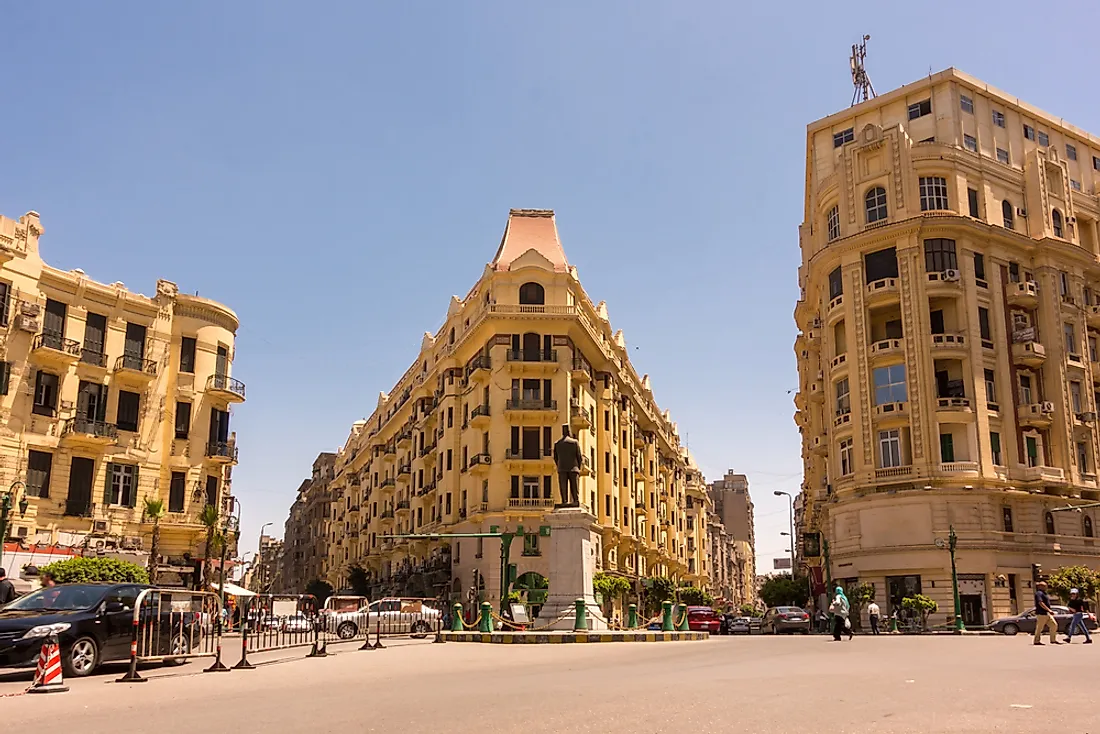What Is The Capital City Of Egypt?

Where Is Egypt?
The transcontinental nation of Egypt stretches from the northeastern corner of Africa across the Sinai Peninsula to Asia’s southwest corner. The country is bordered by Libya to the west and Sudan to the south. To the east of Egypt lies the Red Sea and the Gulf of Aqaba. The former also washes the southern shores of the country. Northern Egypt borders the Mediterranean Sea while Israel and the Gaza Strip forms the northeastern border of Egypt.
What Is The Capital Of Egypt And Where Is It Located?
Cairo is Egypt’s capital city and also the most populous city in the country. The city is located in Lower Egypt which is a section of Egypt encompassing the fertile Nile delta and the land between Upper Egypt and the northern Mediterranean coast. Cairo is at a distance of 165 km to the south of the Mediterranean coast. It lies 120 km to the west of the Suez Canal. The city is based along the banks of the world’s longest river, the Nile River. More specifically, Cairo is based immediately south of the point from where the Nile leaves its valley to branch out and form the Nile Delta. The city proper lies on the Nile’s eastern bank and the metropolis spreads out in all directions.
History Of The Capital City Of Egypt
Due to the strategic location upstream of the Nile Delta, the area in and around Cairo has always been a target of dynasties who ruled the country. The ancient settlement of Memphis, located about 24 km away from present-day Cairo, was a thriving metropolis about 5,000 years back. The Romans settled in Babylon, a fortress town at the site of present-day Cairo, about 2,000 years ago. Later, at around 640 CE, another settlement named al-Fustat developed in the area during the rule of the Muslim ruler Amr ibn As and served as Islamic Egypt’s first capital. In the later years, several ruling dynasties destroyed old capitals and built new ones in the area. Finally, in 968, Jawhar al-Siqilli, a ruler of the Fatimid dynasty established al-Manṣūriyyah as the future capital of the Caliphate whose name was changed to al-Qahira (the official name of present-day Cairo) by Caliph al-Mu'izz li Din Allah in 973. However, for over 200 years, Fustat and not Cairo served as Egypt’s administrative center. It was only in 1168 after the destruction of Fustat that Cairo became the capital city of Egypt and its boundaries were extended to include the ruins of Fustat and nearby settlements like al-Qatta'i and al-Askar.
Over the years, Cairo continued to flourish despite the changing dynasties who were at the helm of power in Egypt. By 1340, Cairo had a population of nearly half a million. It thus was the world’s biggest city west of China at that tin=me. The prosperity of Cairo was severely affected when the Black Death hit the city several times killing masses in the city. During the Ottoman rule, the city lost much of its prior glory. It ceased to be an important trade route for spice when the route around the Cape of Good Hope was discovered by Vasco da Gama.
Later, in the 16th and 17th centuries, Cairo acted as one of the most important cultural, economic, and religious hubs of the Middle East region. Modernisation of the city soon followed with the construction of multi-storeyed buildings and modern road networks, etc. Big changes to Cairo’s landscape happened in the late 19th century during the rule of Isma'il Pasha who continued to modernize Cairo, a process initiated by his grandfather Muhammad Ali Pasha. The huge debts incurred during the execution Pasha’s ambitious projects weakened the economy of Egypt and paved the way for the British invasion of Egypt in 1882. Soon, a struggle for freedom started in Egypt which led to the freedom of the country from British rule in 1922.
Since then, Cairo suffered massive fires, demonstrations, revolutions, earthquakes and other man-made and natural calamities. However, it developed into a major tourism destination in the world due to its rich history and architecture and its population continued to multiply rapidly. As of 2017, the population of Cairo is estimated to be 9,500,000. The city has the Arab world’s oldest music and film industry and its Al-Azhar University is the world’s second oldest institute of higher learning. Many international financial and commercial organizations and media outlets have their headquarters based in this city











